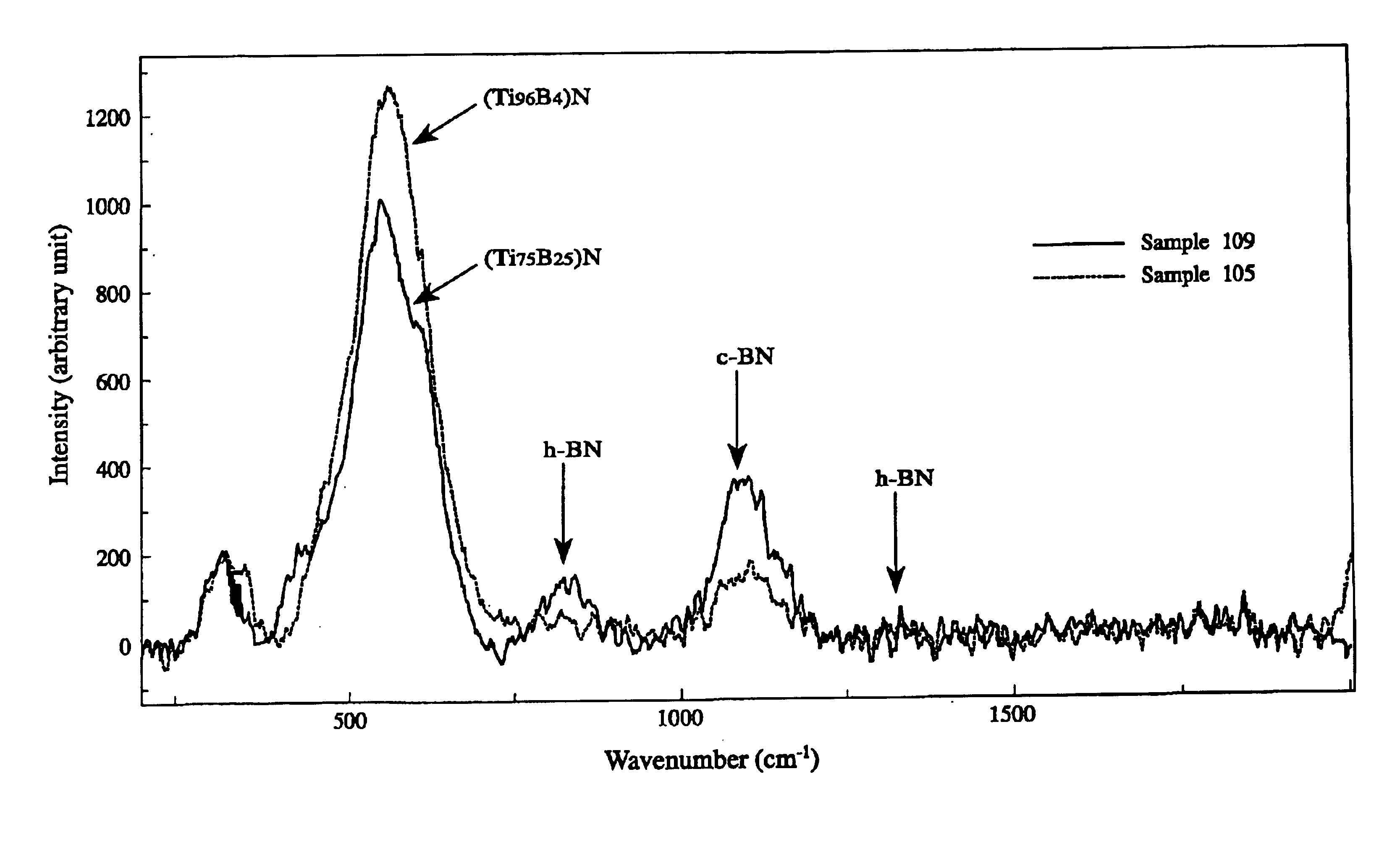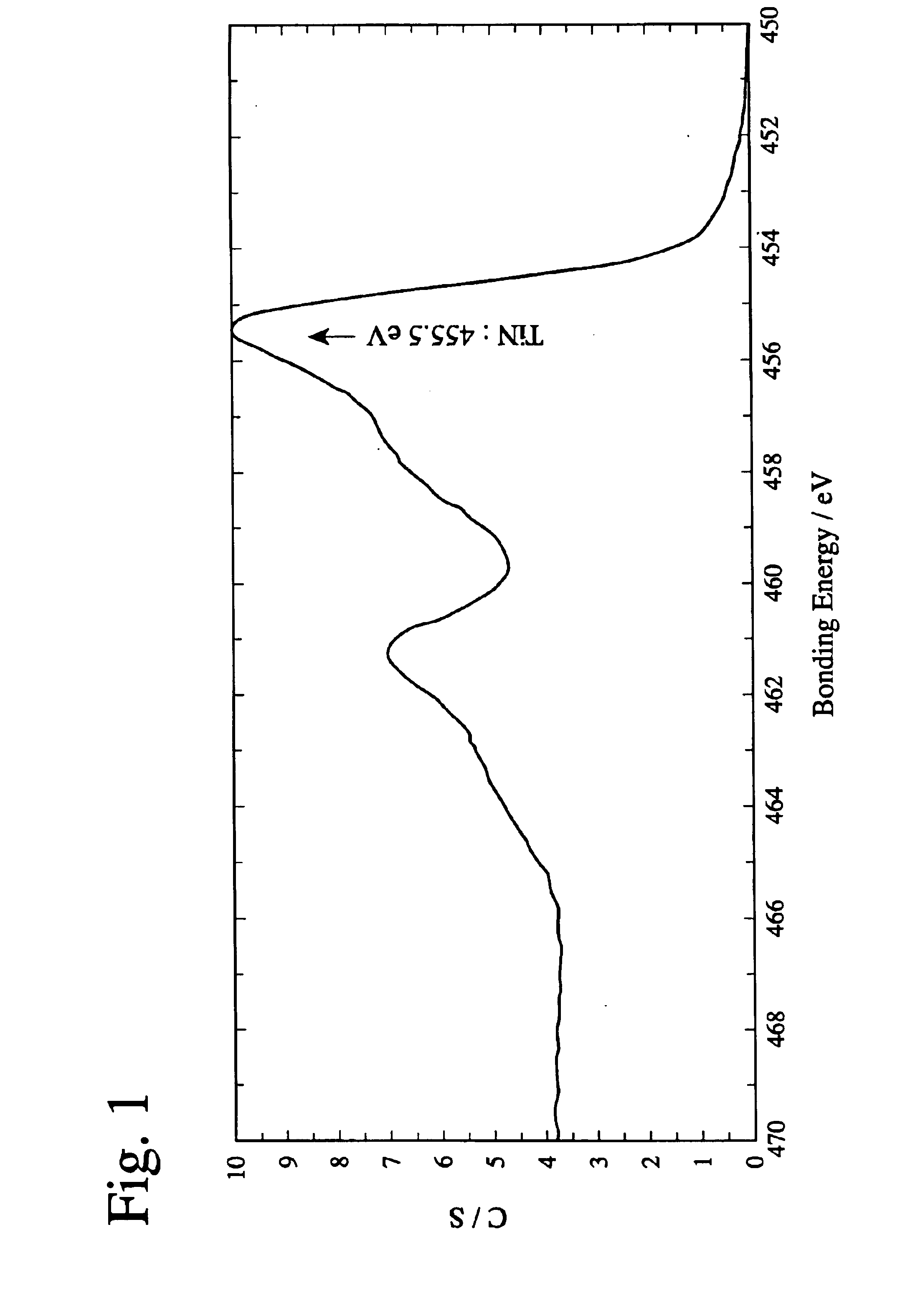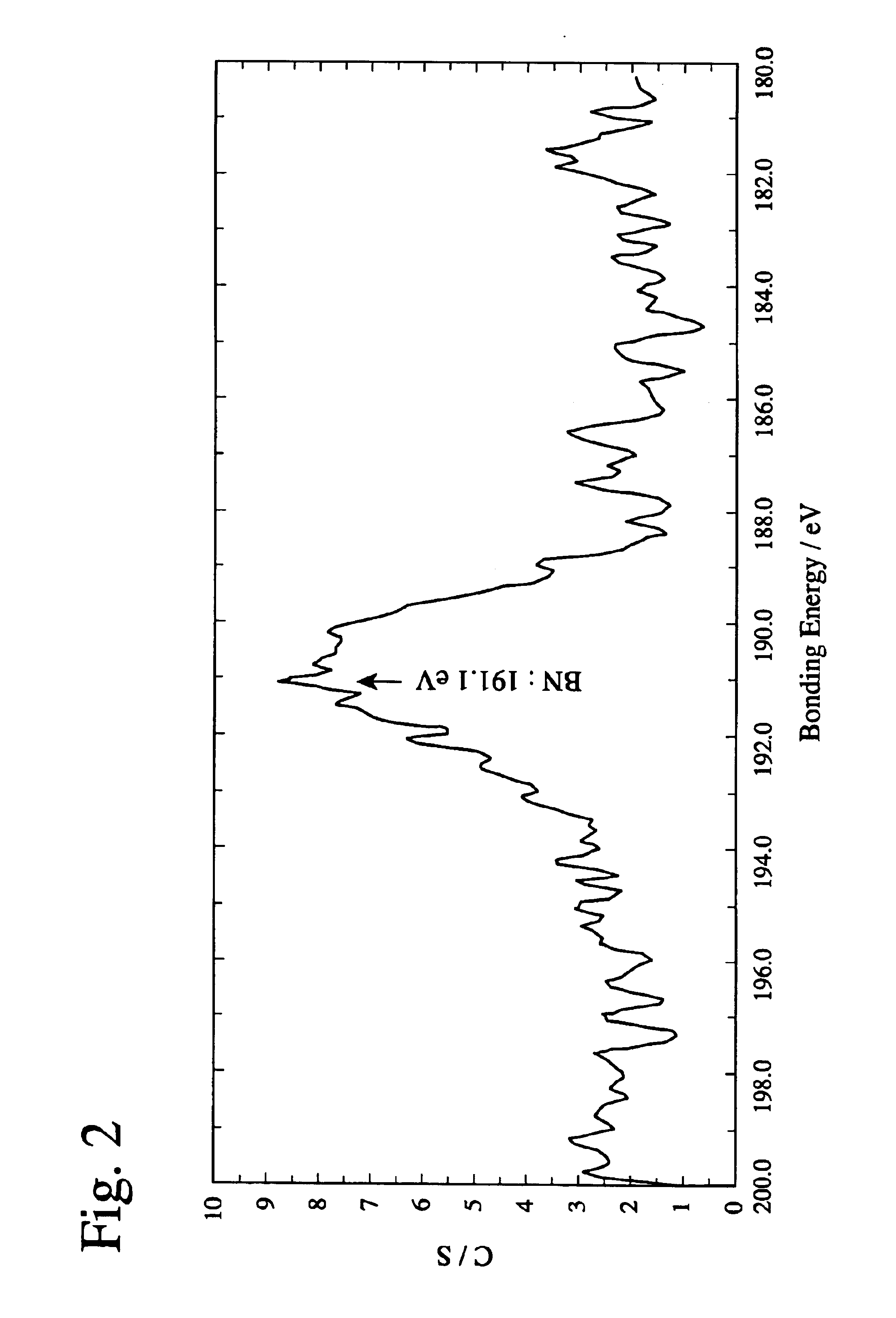Hard layer-coated tool
a tool and hard coating technology, applied in the field of hard coating tools, can solve the problems of extreme long tool life, and achieve the effects of improving seizure resistance, high feed rate, and high speed
- Summary
- Abstract
- Description
- Claims
- Application Information
AI Technical Summary
Benefits of technology
Problems solved by technology
Method used
Image
Examples
example 2
Using the same targets and conditions as in Example 1, cermet inserts (TNGG 110302R) for turning operation were coated with layers having compositions shown in Table 2. Using the resultant hard layer-coated cermet inserts, works of S53C were cut while turning under the conditions of a cutting speed of 220 m / minute, a cutting depth of 1 mm and a feed of 0.15 mm / rev. with a cutting oil. The cermet composition of each insert was 60TiCN--10WC--10TaC--5Mo.sub.2 C--5Ni--10Co by weight %.
Flank wear tends to increase by heat generation by the crater wear in any hard layer-coated cermet inserts. Thus, the life of the tool was determined at a time when the flank wear reached 0.1 mm. The cutting time until reaching life is shown in Table 2.
example 3
Samples 39-52 of the present invention and Samples 15-19 of Comparative Examples were produced under the same conditions as in Example 1, except that part of Al in Ti--Al alloy targets for the second layers was replaced by other elements shown in Table 3, and evaluated with respect to cutting performance. The results are shown in Table 3.
As is clear from Table 3, the tool life was further improved by adding a third component to a hard TiAl coating layer as the second layer. This is because the solid solution strengthening of a (TiAl)N layer occurred by the addition of a third component, resulting in improvement in oxidation resistance.
example 4
Using an arc-ion plating apparatus, and selecting those desired from targets of various alloys as metal element sources, and a nitrogen gas, an oxygen gas and a methane gas as reaction gases depending on the targeted compositions of hard coating layers, milling inserts (bottom-tool inserts of RDMW 1604MOTN) made of cemented carbide (P40 grade) for cutting tools according to JIS B 4053 were provided with various hard coating layers shown in Table 5 under the conditions shown in Table 4. Incidentally, other conditions than shown in Table 4 are the same as in Example 1. The thickness shown in Table 5 was the thickness of each hard coating layer on a face, and the first layers and the second layers were alternately laminated in the case of multi-layer structures of three layers or more. Other coating conditions than described above are the same as in Example 1.
Using the resultant hard layer-coated inserts, each work of SKD61 (hardness HRC 45) was face-milled in a width of 100 mm and a l...
PUM
| Property | Measurement | Unit |
|---|---|---|
| total thickness | aaaaa | aaaaa |
| bias voltage | aaaaa | aaaaa |
| temperature | aaaaa | aaaaa |
Abstract
Description
Claims
Application Information
 Login to View More
Login to View More - R&D
- Intellectual Property
- Life Sciences
- Materials
- Tech Scout
- Unparalleled Data Quality
- Higher Quality Content
- 60% Fewer Hallucinations
Browse by: Latest US Patents, China's latest patents, Technical Efficacy Thesaurus, Application Domain, Technology Topic, Popular Technical Reports.
© 2025 PatSnap. All rights reserved.Legal|Privacy policy|Modern Slavery Act Transparency Statement|Sitemap|About US| Contact US: help@patsnap.com



